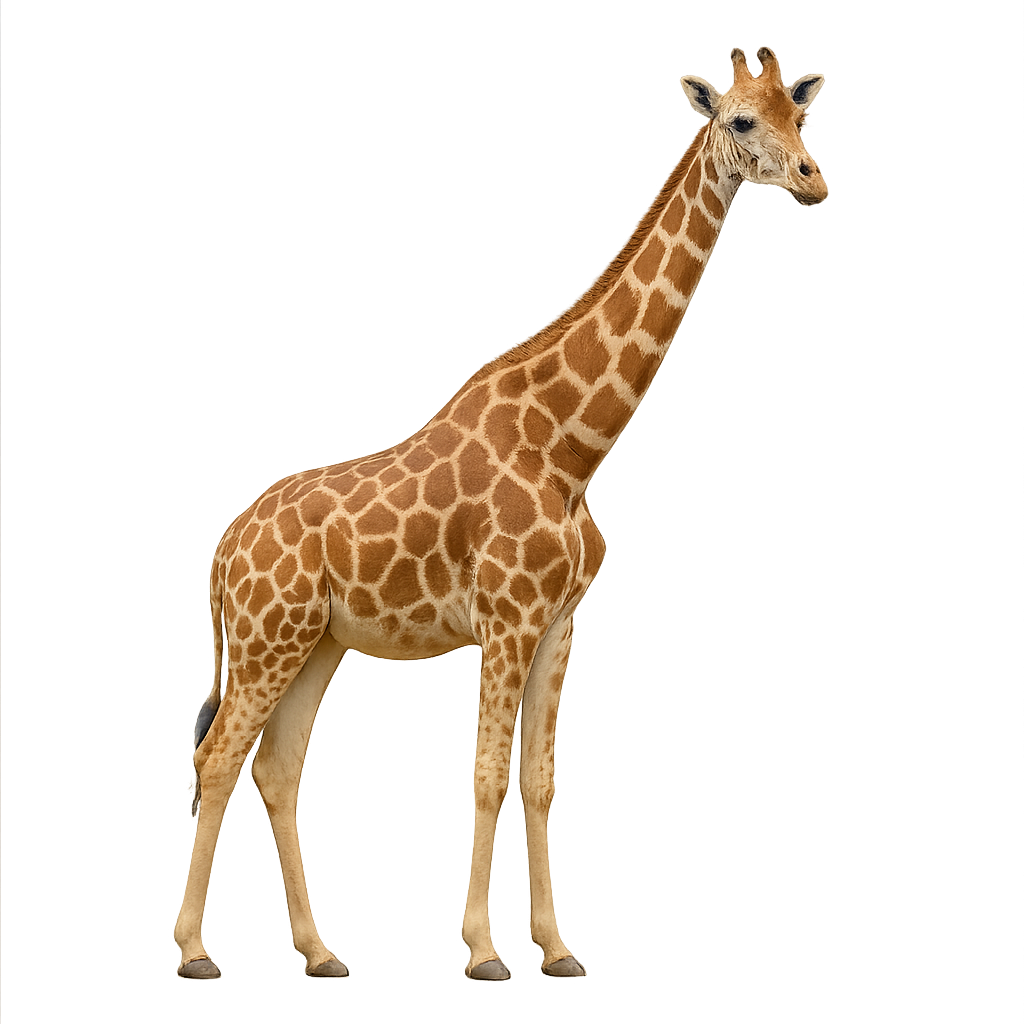Your wildlife photography guide.
Explore the nubian giraffe in detail, study its behavior, prepare your shots.
Where to observe and photograph the nubian giraffe in the wild
Learn where and when to spot the nubian giraffe in the wild, how to identify the species based on distinctive features, and what natural environments it inhabits. The WildlifePhotographer app offers tailored photography tips that reflect the nubian giraffe’s behavior, helping you capture better wildlife images. Explore the full species profile for key information including description, habitat, active periods, and approach techniques.
Nubian Giraffe
Scientific name: Giraffa camelopardalis

IUCN Status: Vulnerable
Family: GIRAFFIDAE
Group: Mammals
Sensitivity to human approach: Suspicious
Minimum approach distance: 110 m
Rut period: August to October
Gestation: 450-465 jours
Births: November to January
Habitat:
Savanna and arid zones
Activity period :
Primarily active during the day, with peak activity in the morning and late afternoon.
Identification and description:
The Northern Giraffe is a subspecies of giraffe, characterized by its slender body and long neck. It stands about 4.5 to 5.5 meters tall, with males being larger and bulkier than females. Northern giraffes weigh between 800 and 1,200 kg. Their coat is light beige with irregular patches of brown or orange, which are smaller and more closely spaced than those of other giraffe subspecies. These patches are outlined in white, creating a distinctive pattern. The Northern Giraffe primarily inhabits the savannas and open woodlands of northern Kenya, particularly in the Samburu National Reserve and surrounding areas. Herbivorous, it feeds mainly on acacia leaves and other tall vegetation, which it reaches with its long neck and prehensile tongue. The Northern Giraffe is an endangered species, due to habitat loss and human conflicts, including poaching and encroachment on its land.
Recommended lens:
70-200 mm – adjust based on distance, desired framing (portrait or habitat), and approach conditions.
Photography tips:
Approach slowly and quietly, using a telephoto lens to photograph from a distance. Although giraffes are large and visible, they can be sensitive to human presence.
Photograph early morning or late afternoon, when soft light highlights their activity—feeding on treetops or moving across savannahs and open woodlands.
Capture natural behavior: grazing, walking in herds, or social interactions all offer great photo opportunities.
Be patient and respectful—keep your distance and avoid disturbing them.
IUCN status: Vulnerable. Respect their habitat and follow local conservation rules.
From knowledge to field practice
A species profile helps you understand an animal. In the field, the challenge is often different. Remembering your own observations.
The WildlifePhotographer app allows you to:
• record your personal observations
• note locations, dates, and behaviors
• revisit your field references over time
• build a private and long-term field logbook
The app does not provide observation locations.
It helps you organize what you actually observe, with respect for wildlife.

